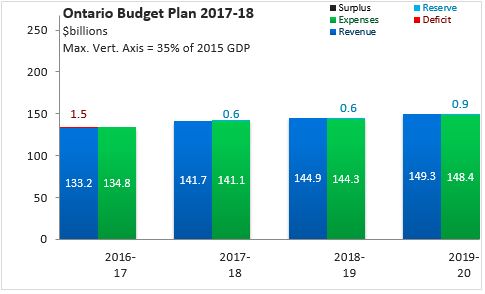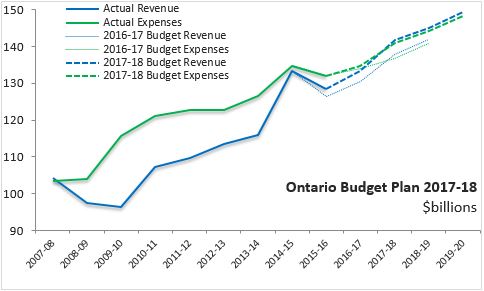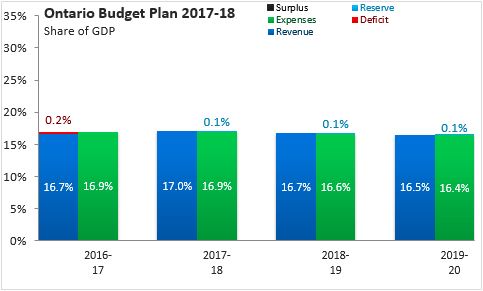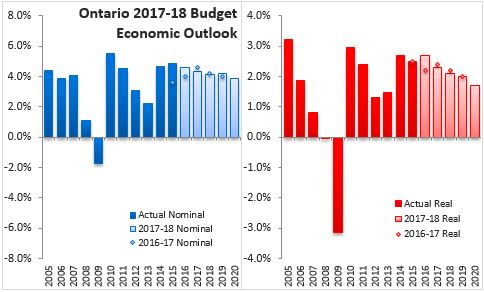For additional information relating to this article, please contact:
April 28, 2017ONTARIO BUDGET 2017-18 Ontario's Budget projects a return to balance in 2017-18. There have been nine deficits since 2008-09, ending with a $1.5 billion deficit forecast for 2016-17. Starting in 2017-18, Ontario projects balanced budgets (zero surplus or deficit) in each of the next three fiscal years. Ontario's balance does incorporate a $600 million reserve allowance in 2017-18 and 2018-19, rising to $900 million in 2019-20. This reserve protects the commitment to balance from adverse shocks.

Since the last multi-year fiscal plan, there have been increases in both revenues and expenditures. Notably, revenue performance has been stronger than planned for 2016-17 in corporate, personal income, sales and land transfer taxes. This growth carries through into higher revenues for 2017-18 and beyond, supplemented by carbon allowance proceeds. With higher revenues, the Ontario fiscal plan also projects higher expenditures from 2017-18 to 2019-20. Between 2016-17 and 2019-20, revenues are projected to grow at an annual average rate of 3.9 per cent while expenditures grow at an annual average rate of 3.3 per cent. The reserve provision in the Ontario fiscal plan has been trimmed since last year, narrowing the excess of revenues over expenditures.

Ontarios nominal GDP growth is projected to be slightly faster than the rate of growth for revenues and expenditures. So the footprint of the Provincial government expenditures in the Ontario economy is projected to decline slightly from 16.9 per cent of GDP in 2017-18 to 16.4 per cent in 2019-20. Revenues are projected to decline from 17.0 per cent of GDP to 16.5 per cent of GDP. The reserve provision allowed in the Budget is 0.1 per cent of GDP in each of the next three fiscal years.

Robust economic growth has played an important role in Ontario's return to balance. Nominal GDP growth was 4.7 per cent in 2014 and 4.9 per cent in 2015 while real output increased by 2.7 per cent in 2014 and by 2.5 per cent in 2015. This pace of economic growth is forecast to slow gradually over the forecast horizon. Exports are projected to rise as US demand strengthens and recovery in the rest of Canada's economy supports interprovincial shipments. Employment gains are expected to follow the trend established since 2009 while the unemployment rate continues to come down. Residential housing construction in Ontario has been supported by healthy demographic drivers, but the outlook for this sector of the economy will be tempered by higher prices, higher interest rates and policy measures to cool some markets.

Key Measures and Initiatives
The Ontario Budget reports a balance for the first time since the global financial and economic crisis of 2008. While maintaining balanced budgets over the coming three fiscal years, the Ontario government plans expanded services such as pharmacare coverage for all Ontarians aged 24 and under.
Ontario Budget 2017-18